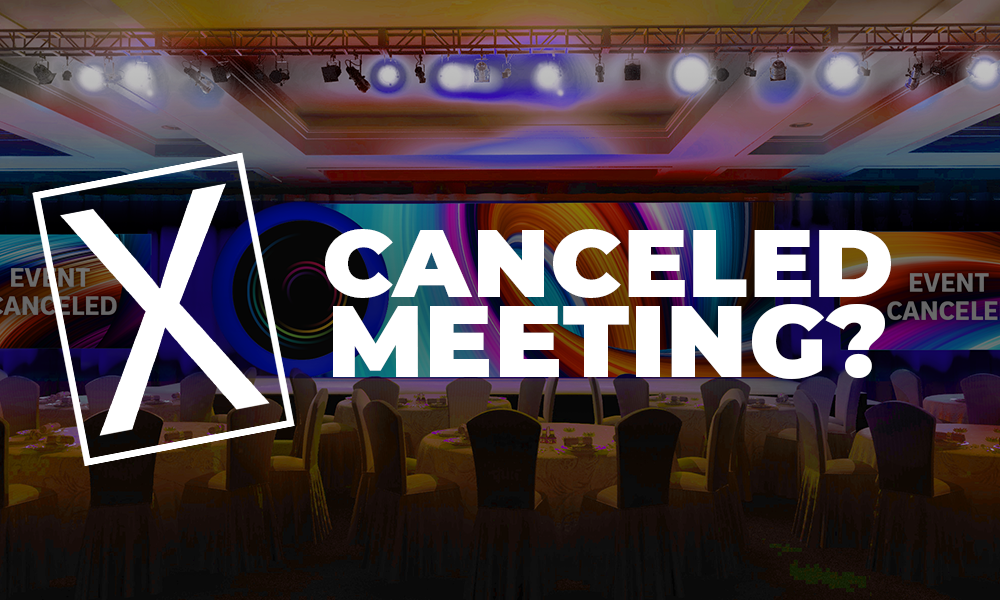 Post Written by Brian Burkhart – Forbes Councils Member
Post Written by Brian Burkhart – Forbes Councils Member
Founder & CEO of SquarePlanet Presentations, author of Amazon #1 bestseller “Stand for Something” and faculty at Northwestern University. Original Post Link Here
It’s estimated that roughly 30 million PowerPoint presentations are given every single workday. That’s a lot of people trying to deliver insights and ideas that move others to action. Each and every one of those presentations has a distinct beginning — the moment when the audience begins to take in or digest the information provided.
But when exactly does the presentation begin? On the surface, this might seem like a simple question, but scratch just a bit deeper, and you’ll see there’s so much more at work.
I spend a tremendous amount of time in ballrooms and boardrooms where I experience a great many live presentations. Often, I see people who are the “storm before the calm.” Yes, you read that correctly, and you’ve likely experienced this, too. These types of presenters come flying into a room with a combination of nervous and excited energy born from a variety of troublesome places. Perhaps they were stuck in traffic, their Uber was late or the elevator was out. They fill the space with frenetic energy and a first impression that’s tough to overcome.
The answer to when a presentation begins is perhaps now a bit more apparent: It’s well before you actually start. Whether someone arrives in a timely, calm manner or thinks through their speech and materials well in advance, the best presenters and their presentations start long before the audience ever sets eyes on them.
As the founder and CEO of a company that specializes in presentation development, I’ve learned this lesson firsthand. Below are a few best practices to keep in mind before your presentation ever begins.
Incorporate gratitude.
When I coach business leaders on presentation best practices, I begin with an idea that almost always catches them by surprise: I provide a gratitude journal. Essentially, it’s a notebook where they’re instructed to offer a daily musing of gratitude. This gratitude could be shown for simple things, such as an electric toothbrush, or deeply meaningful things, like a healthy, supportive family structure.
Regardless of audience size, I do this because I want all presenters to arrive at the opportunity in front of them with a profound sense of gratitude. Presenting your insights and ideas to anybody is not a task that should simply be checked off of a to-do list. Rather, for even the most seasoned presenter, a presentation is a rare opportunity to speak with other people who are giving you their wildly valuable time and attention.
I began this practice of gratitude only after I needed it myself. You see, I was becoming worn out, tired, apathetic and sometimes straight-up combative. I’d take the stage with a shroud of negative energy born from travel woes, overflowing inboxes and relentless demands. It was a bitter concoction, and one that became obvious when I reviewed footage of my own presentations.
Sure, beginning with gratitude in mind propels the notion of opportunity versus task in a purely metaphysical way, but it’s big because the audience you’re presenting to feels and experiences that, too. No matter the size of your audience, gratitude plays a big role in how you’re perceived.
For example, imagine you’re in a job interview. From my perspective, that, too, is a presentation; it just happens to be a presentation in which you’re the subject. The person interviewing you can absolutely feel the nuanced energy you bring with you. It’s easy to feel when a candidate sees the interview as a task while others see it as an opportunity to be savored. You bring that with you, which means the presentation begins long before you arrive.
Don’t stress in front of your audience.
Large-scale meetings and events provide another arena for presenters to show their true colors. I’ve seen many presenters who were waiting to go on stage, all while doing the one thing the best poker players in Las Vegas know to never do: show their cards.
Nerves are an absolutely normal part of the presenting equation. It’s OK to be nervous with anticipation. However, it’s important to avoid pacing the room or strictly standing at attention on the stage. You’re providing the audience with a tell — a sign that you’re already feeling the heat of what looms ahead. In a word, stop. Stop the pacing. Stop the rigid stance. Simply remain parked in your seat, or if possible, retreat backstage and beyond the view of your audience.
Reassure yourself.
Additionally, I want your pre-presentation routine to include affirming self-speech. Think of this as a mantra, a pre-game warm-up or an internal pick-me-up to help you align yourself properly. In your head, simply remind yourself how awesome the opportunity to share your wisdom really is. Remind yourself that you’re excited, grateful and authentically happy to be there.
Soon, I’ll cover what steps you should take to overcome the nerve-racking, stomach-churning, sweat-inducing feelings some of us experience when we present. Until then, remember to practice gratitude, stay relaxed in front of your audience and reassure yourself with positive internal thoughts. This way, you’ll be prepared for your presentation before you ever take the stage.
 Founder & CEO of SquarePlanet Presentations, author of Amazon #1 bestseller “Stand for Something” and faculty at Northwestern University. Read Brian Burkhart’s full executive profile here.
Founder & CEO of SquarePlanet Presentations, author of Amazon #1 bestseller “Stand for Something” and faculty at Northwestern University. Read Brian Burkhart’s full executive profile here.





0 Comments